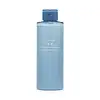What's inside
What's inside
 Key Ingredients
Key Ingredients

No key ingredients
 Benefits
Benefits

 Concerns
Concerns

 Ingredients Side-by-side
Ingredients Side-by-side

Water
Skin ConditioningGlycerin
HumectantDimethicone
EmollientCetyl Ethylhexanoate
EmollientHelianthus Annuus Seed Oil
EmollientPEG-75
HumectantPentylene Glycol
Skin ConditioningPropanediol
SolventTriethylhexanoin
MaskingGlyceryl Stearate
EmollientPolyquaternium-51
Skin ConditioningTuna Extract
Skin ConditioningVitis Vinifera Fruit Extract
Skin ConditioningPyrus Malus Fruit Extract
Skin ConditioningMyrica Cerifera Fruit/Bark Extract
AstringentBetula Alba Leaf Extract
AstringentSodium Hyaluronate
HumectantAllantoin
Skin ConditioningArginine
MaskingGlycosyl Trehalose
Emulsion StabilisingHydrogenated Starch Hydrolysate
HumectantButylene Glycol
HumectantPropylene Glycol
HumectantEthylhexylglycerin
Skin ConditioningBehenyl Alcohol
EmollientDimethicone Crosspolymer
Emulsion StabilisingPEG-75 Stearate
Polysorbate 80
EmulsifyingCarbomer
Emulsion StabilisingTocopherol
AntioxidantTetrasodium EDTA
Phenoxyethanol
PreservativeParfum
MaskingWater, Glycerin, Dimethicone, Cetyl Ethylhexanoate, Helianthus Annuus Seed Oil, PEG-75, Pentylene Glycol, Propanediol, Triethylhexanoin, Glyceryl Stearate, Polyquaternium-51, Tuna Extract, Vitis Vinifera Fruit Extract, Pyrus Malus Fruit Extract, Myrica Cerifera Fruit/Bark Extract, Betula Alba Leaf Extract, Sodium Hyaluronate, Allantoin, Arginine, Glycosyl Trehalose, Hydrogenated Starch Hydrolysate, Butylene Glycol, Propylene Glycol, Ethylhexylglycerin, Behenyl Alcohol, Dimethicone Crosspolymer, PEG-75 Stearate, Polysorbate 80, Carbomer, Tocopherol, Tetrasodium EDTA, Phenoxyethanol, Parfum
Water
Skin ConditioningDipropylene Glycol
HumectantGlycerin
HumectantEthylhexyl Palmitate
EmollientPEG-32
HumectantSqualane
EmollientPentylene Glycol
Skin ConditioningPEG-40 Hydrogenated Castor Oil
EmulsifyingGlycosyl Trehalose
Emulsion StabilisingHydrolyzed Starch
HumectantPortulaca Oleracea Extract
Skin ConditioningOlea Europaea Fruit Oil
MaskingPolyquaternium-51
Skin ConditioningCitrus Grandis Seed Extract
AstringentArginine
MaskingAllantoin
Skin ConditioningXanthan Gum
EmulsifyingCarbomer
Emulsion StabilisingButylene Glycol
HumectantSodium Citrate
BufferingPhenoxyethanol
PreservativeWater, Dipropylene Glycol, Glycerin, Ethylhexyl Palmitate, PEG-32, Squalane, Pentylene Glycol, PEG-40 Hydrogenated Castor Oil, Glycosyl Trehalose, Hydrolyzed Starch, Portulaca Oleracea Extract, Olea Europaea Fruit Oil, Polyquaternium-51, Citrus Grandis Seed Extract, Arginine, Allantoin, Xanthan Gum, Carbomer, Butylene Glycol, Sodium Citrate, Phenoxyethanol
 Reviews
Reviews

Ingredients Explained
These ingredients are found in both products.
Ingredients higher up in an ingredient list are typically present in a larger amount.
Allantoin is a soothing ingredient known for its protective and moisturizingg properties. Because of this, it is often added to products with strong active ingredients.
Studies show higher concentrations of this ingredient can promote wound healing.
Though it can be derived from the comfrey plant, allantoin is produced synthetically for cosmetic products to ensure purity.
Learn more about AllantoinArginine is an amino acid that is important for human development. Your body uses is it to produce hair keratin and skin collagen.
As a cosmetic ingredient, Arginine has antioxidant properties and can also help repair damaged skin. This ingredient is derived either synthetically or from animals.
Arginine isn't fungal acne safe when used in the presence of other lipids (fats, fatty acids, oils, esters, etc). Oils and fats occur naturally within the skin, so take caution when using Arginine if you're prone to fungal acne.
Learn more about ArginineButylene Glycol (or BG) is used within cosmetic products for a few different reasons:
Overall, Butylene Glycol is a safe and well-rounded ingredient that works well with other ingredients.
Though this ingredient works well with most skin types, some people with sensitive skin may experience a reaction such as allergic rashes, closed comedones, or itchiness.
Learn more about Butylene GlycolCarbomer is a polymer of acrylic acid. Its main role is to create a gel consistency.
A high amount of carbomer can cause pilling or balling up of products. Don't worry, most products contain 1% or less of carbomer.
Glycerin is already naturally found in your skin. It helps moisturize and protect your skin.
A study from 2016 found glycerin to be more effective as a humectant than AHAs and hyaluronic acid.
As a humectant, it helps the skin stay hydrated by pulling moisture to your skin. The low molecular weight of glycerin allows it to pull moisture into the deeper layers of your skin.
Hydrated skin improves your skin barrier; Your skin barrier helps protect against irritants and bacteria.
Glycerin has also been found to have antimicrobial and antiviral properties. Due to these properties, glycerin is often used in wound and burn treatments.
In cosmetics, glycerin is usually derived from plants such as soybean or palm. However, it can also be sourced from animals, such as tallow or animal fat.
This ingredient is organic, colorless, odorless, and non-toxic.
Glycerin is the name for this ingredient in American English. British English uses Glycerol/Glycerine.
Learn more about GlycerinWe don't have a description for Glycosyl Trehalose yet.
Pentylene glycol is typically used within a product to thicken it. It also adds a smooth, soft, and moisturizing feel to the product. It is naturally found in plants such as sugar beets.
The hydrophilic trait of Pentylene Glycol makes it a humectant. As a humectant, Pentylene Glycol helps draw moisture from the air to your skin. This can help keep your skin hydrated.
This property also makes Pentylene Glycol a great texture enhancer. It can also help thicken or stabilize a product.
Pentylene Glycol also acts as a mild preservative and helps to keep a product microbe-free.
Some people may experience mild eye and skin irritation from Pentylene Glycol. We always recommend speaking with a professional about using this ingredient in your routine.
Pentylene Glycol has a low molecular weight and is part of the 1,2-glycol family.
Learn more about Pentylene GlycolPhenoxyethanol is a preservative that has germicide, antimicrobial, and aromatic properties. Studies show that phenoxyethanol can prevent microbial growth. By itself, it has a scent that is similar to that of a rose.
It's often used in formulations along with Caprylyl Glycol to preserve the shelf life of products.
Polyquaternium-51 is a polymer salt. It helps hydrate the skin by creating a film on top. This film traps moisture in, keeping your skin soft and hydrated.
Water. It's the most common cosmetic ingredient of all. You'll usually see it at the top of ingredient lists, meaning that it makes up the largest part of the product.
So why is it so popular? Water most often acts as a solvent - this means that it helps dissolve other ingredients into the formulation.
You'll also recognize water as that liquid we all need to stay alive. If you see this, drink a glass of water. Stay hydrated!
Learn more about Water